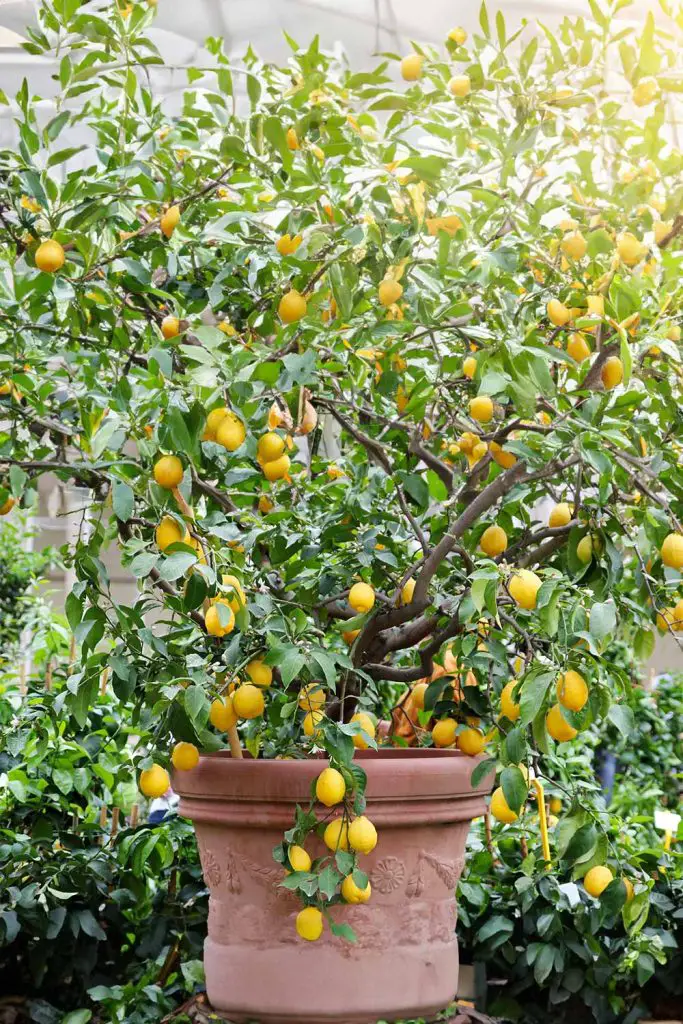How To Grow A Lemon Tree In A Pot That Actually Produces Lemons!

Growing a lemon tree in a pot is a rewarding endeavor that combines the beauty of citrus with the practicality of home-grown fruit. With the right care, you can enjoy the fresh scent of lemon blossoms and the zest of homegrown lemons all year round.
Here’s a comprehensive guide to ensure your potted lemon tree thrives and produces an abundance of juicy lemons.
Choosing the Right Lemon Tree Variety
Not all lemon trees are suited for container gardening. Dwarf varieties, such as the Meyer lemon, are ideal for pot growth. Meyer lemons are smaller and sweeter than typical lemons, making them perfect for culinary uses and fresh consumption.
Another good option is the Ponderosa lemon, known for its large fruit and robust growth. These varieties are more manageable in pots and tend to be more prolific in smaller spaces.
Selecting the Perfect Pot
The pot you choose is crucial to the success of your lemon tree. Start with a pot that is at least 18-24 inches in diameter and has ample drainage holes.
Lemon trees do not like to sit in water, as this can lead to root rot. Consider using a terracotta or ceramic pot, as they allow the soil to breathe, helping prevent overwatering issues.
Soil and Planting Essentials
Lemon trees thrive in well-draining, slightly acidic soil. A high-quality potting mix designed for citrus trees is ideal. You can create your own mix by combining equal parts of potting soil, perlite, and peat moss.
When planting, ensure the tree’s root ball is level with the soil surface. Water thoroughly after planting to settle the soil around the roots.
Positioning for Optimal Sunlight
Lemon trees need plenty of sunlight to produce fruit, ideally 8-12 hours a day. Place your pot in a sunny location, such as a south-facing balcony or patio.
If you’re growing your tree indoors, position it near a large, bright window. Consider supplementing with grow lights during the winter months or if natural light is insufficient.
Watering and Fertilizing Techniques
Consistent watering is key to a healthy lemon tree. The soil should be kept moist but not waterlogged. Water deeply when the top inch of soil feels dry.
During the growing season (spring through early fall), feed your tree with a balanced citrus fertilizer every 4-6 weeks. In winter, reduce feeding to every 8-10 weeks as the tree’s growth slows.
Pruning for Shape and Health
Regular pruning helps maintain the shape of your lemon tree and encourages healthy growth. Remove any dead or diseased branches, and thin out the interior to allow light and air to penetrate.
Pruning also helps manage the size of the tree, preventing it from outgrowing its pot. The best time to prune is in early spring before new growth begins.
Pollination Practices
Unlike outdoor lemon trees, potted trees indoors may require hand pollination. Lemon trees are self-pollinating, but you can assist by using a small, soft brush to transfer pollen from one flower to another. This ensures better fruit set and development.
Outdoor trees will naturally attract bees and other pollinators.
Protecting from Pests and Diseases
Potted lemon trees can be susceptible to pests like aphids, spider mites, and scale. Regularly inspect your tree and treat infestations promptly with insecticidal soap or neem oil. Ensure good air circulation around your tree to prevent fungal diseases.
If you notice yellowing leaves or stunted growth, check for root rot and adjust your watering practices accordingly.
Harvesting Your Lemons
The reward for your care and attention is a bountiful harvest of lemons. Lemons are usually ready to pick when they turn from green to bright yellow and are slightly soft to the touch. Meyer lemons can be left on the tree longer, as they continue to sweeten.
Harvest lemons by gently twisting them off the tree or using sharp pruners to avoid damaging the branches.
Growing a lemon tree in a pot that produces fruit is entirely possible with the right variety, potting mix, and care practices. Follow these tips, and you’ll soon enjoy the satisfaction of harvesting your own fresh, juicy lemons straight from your patio or living room. Happy gardening!

More interesting articles you may be interested in reading:

